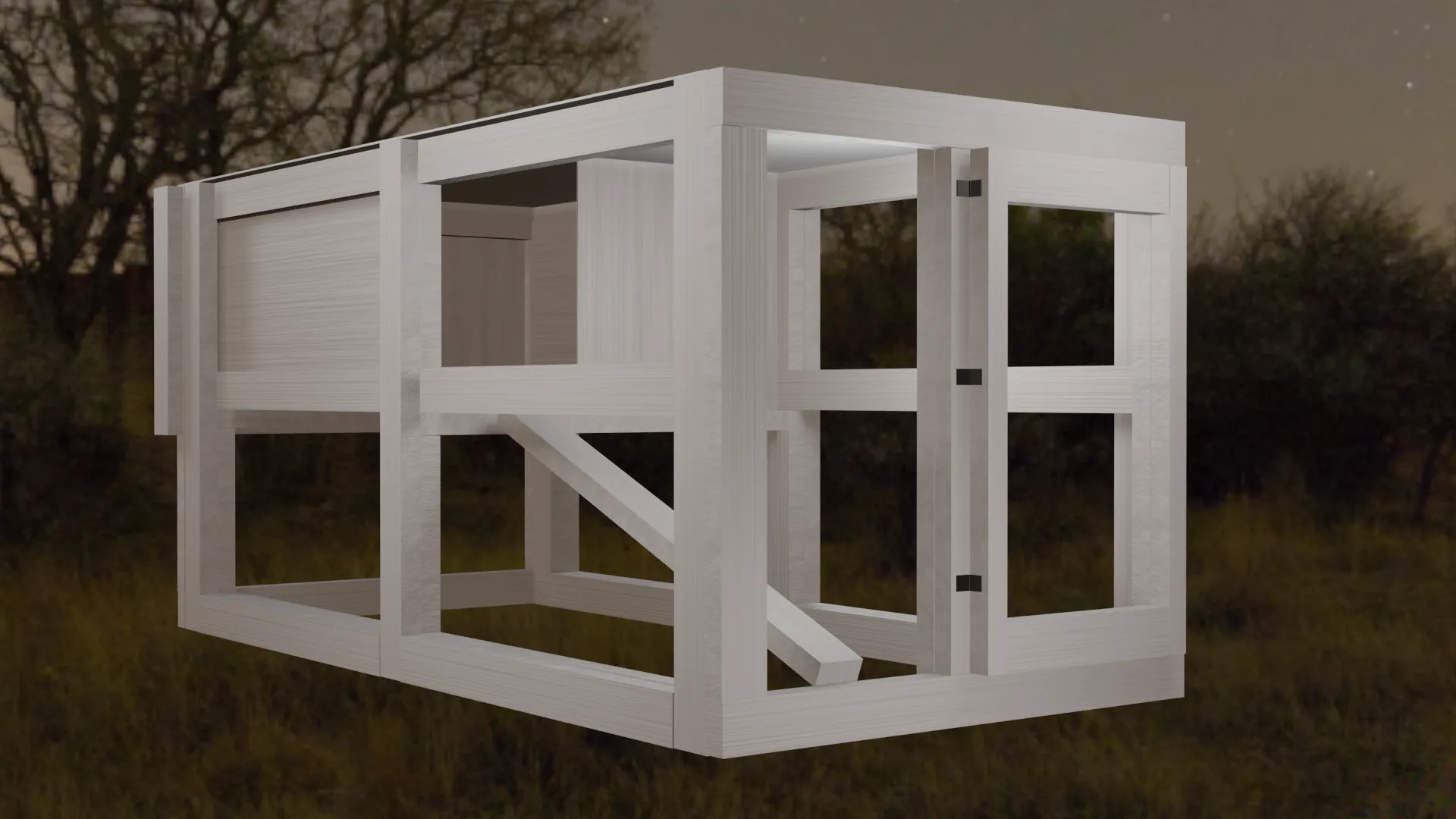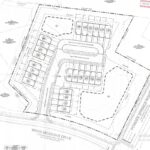It’s time for our youngest chickens to move out of their cramped cage and get to work out in the field. I decided to build a Chicken Tractor. Follow along with me in this post to learn how it all came together!

Vision: 3d Model
What’s nice about having the model is that once it was made, all I had to do was count the boards to get a materials list. As I put it together outside, I could come back and see where each piece went just like a lego set!
Parts List
| Item | Qty | Price Per |
|---|---|---|
| 2x4x8 | 27 | $4 |
| 4x4x8 Paneling | 3 | $22 |
| 2x2x8 Furring Strip | 3 | $2 |
| 1/4 Inch Hardware Cloth | 1 | $50 |
| Outdoor Primer | 1 gal | $20 |
| Outdoor Paint | 1 gal | $20 |
| Nails | Big Box | $25 |
| Hinges (2 pack) | 1 | $5 |
| Latch | 1 | $7 |
| Clasp | 1 | $5 |
Getting Started
(timelapse)
I tacked the base of the frame with two nails per joint. in the future when it’s time to add the hardware cloth, I actually took the first parts of the frame off so I could sandwich the cloth underneath it. It worked well!
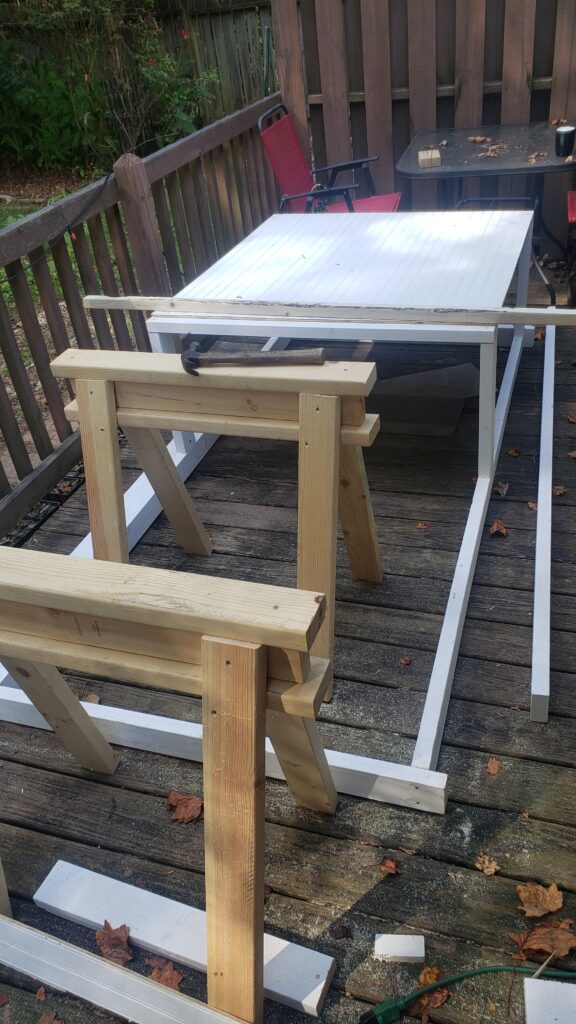
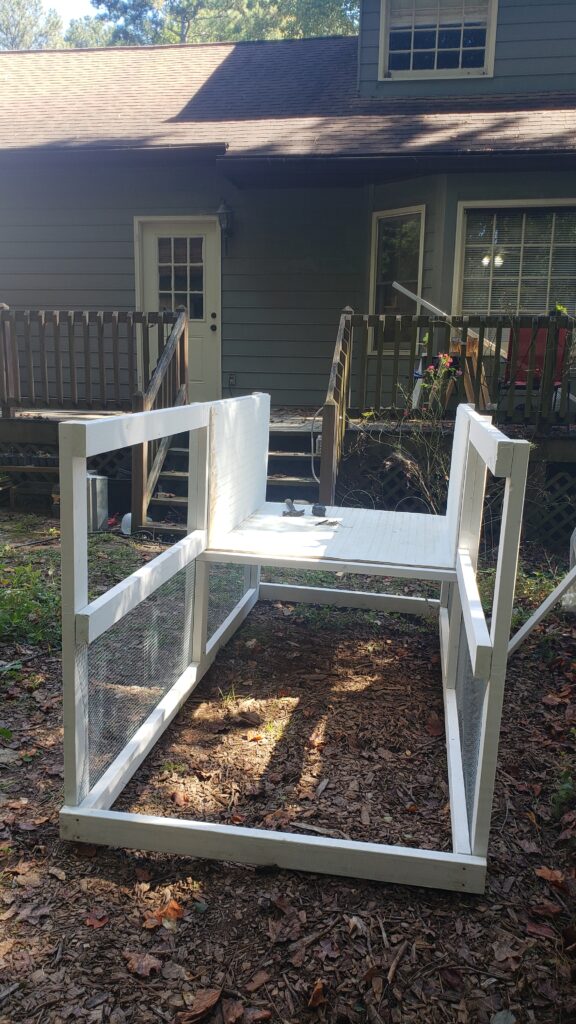
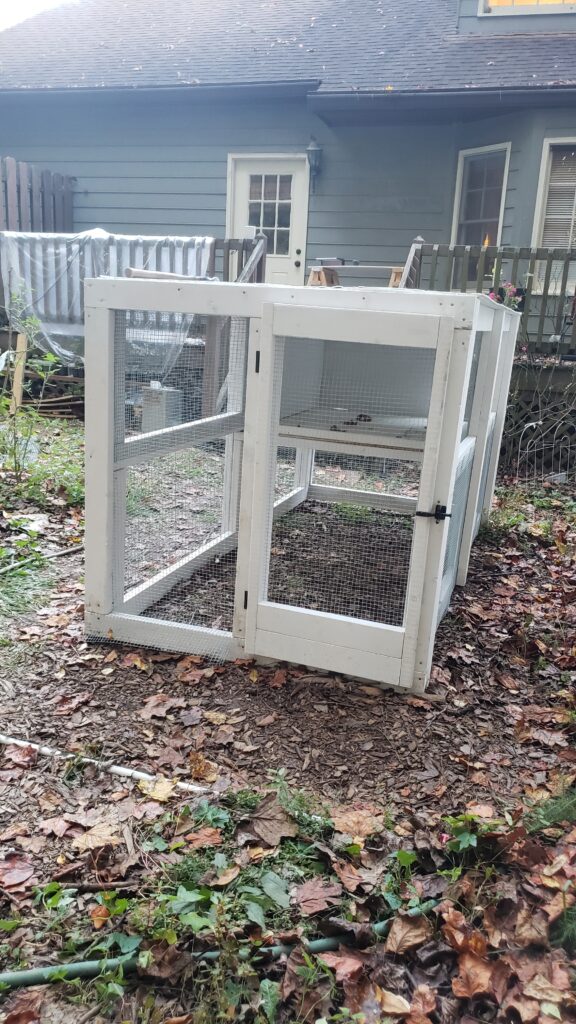
Tips
~ It’s a tough project, so take your time. I took over a month to finish mine!
~ Create a drawing or something to reference before measuring lengths to cut. I used my 3d Model file, and would select boards and hide them when I added them.
~ Try to reuse material. in my case I was able to salvage some hard ware cloth from scraps my sister had left over from another project.
~ We got a solar powered automatic coop door with a remote, so we can look out our kitchen window and see if we need to manually open or close the door!
Final Chicken Tractor
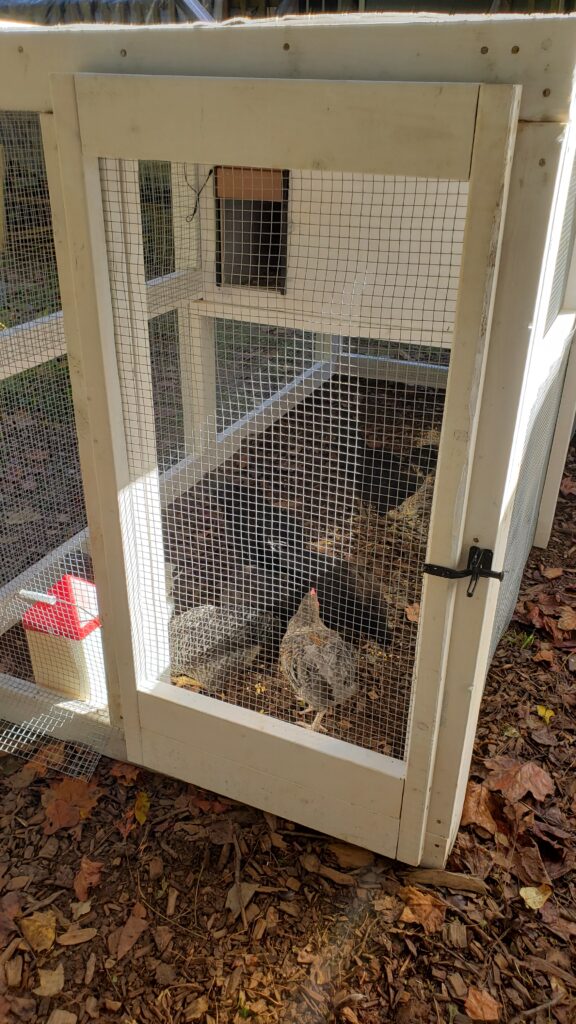
Final Thoughts
I enjoy doing DIY projects like these even thought they are somewhat challenging. I spent maybe 16 hours total on this build, really dragging my feet a lot of the time. Even though it was challenging I feel I have increased my construction, 3d modelling, planning, and budgeting skills which is the real value in my eyes. I am more confident in these abilities and I can already think of other projects I can do with my strengthened skills. Stay tuned to read about them!

